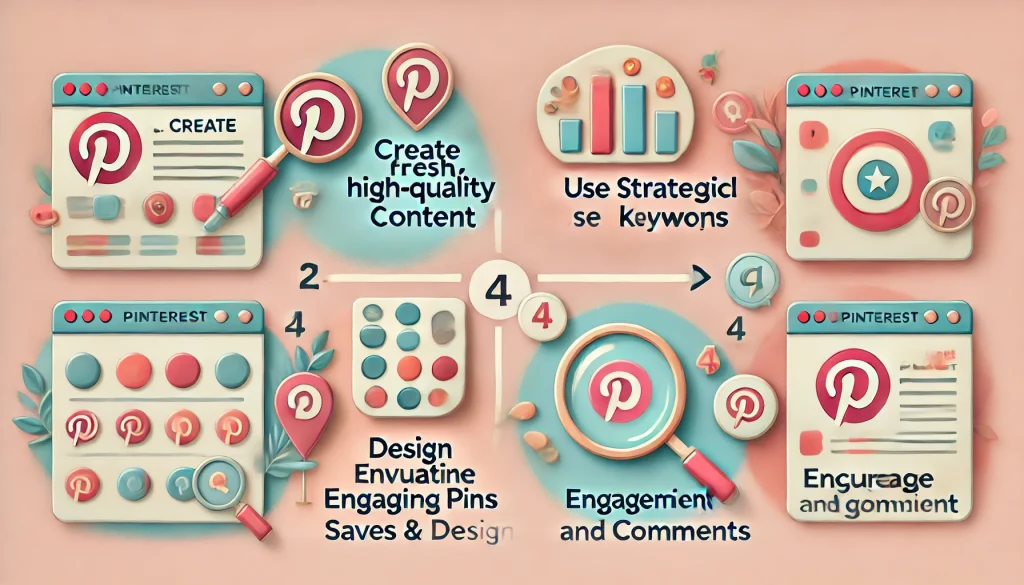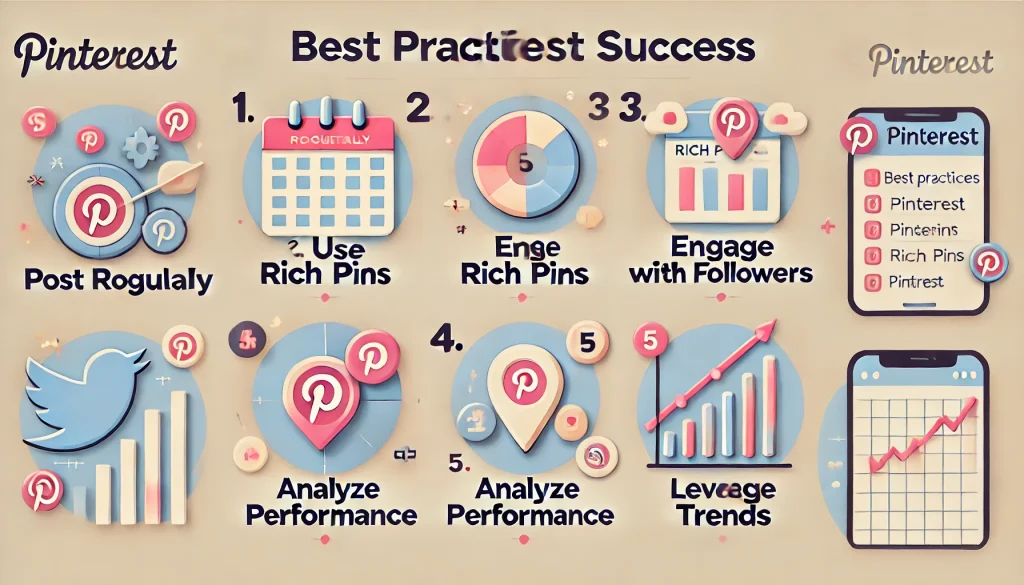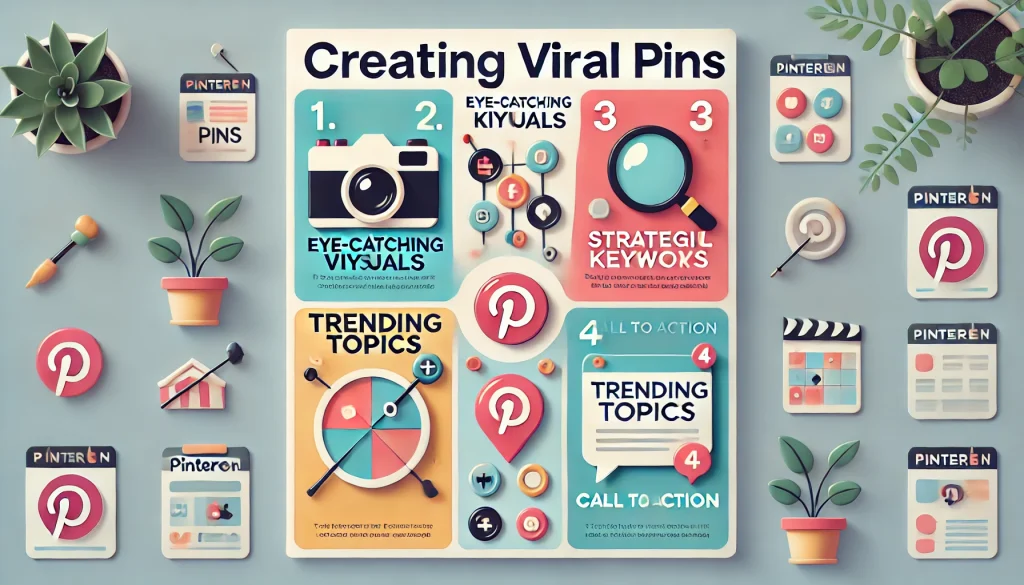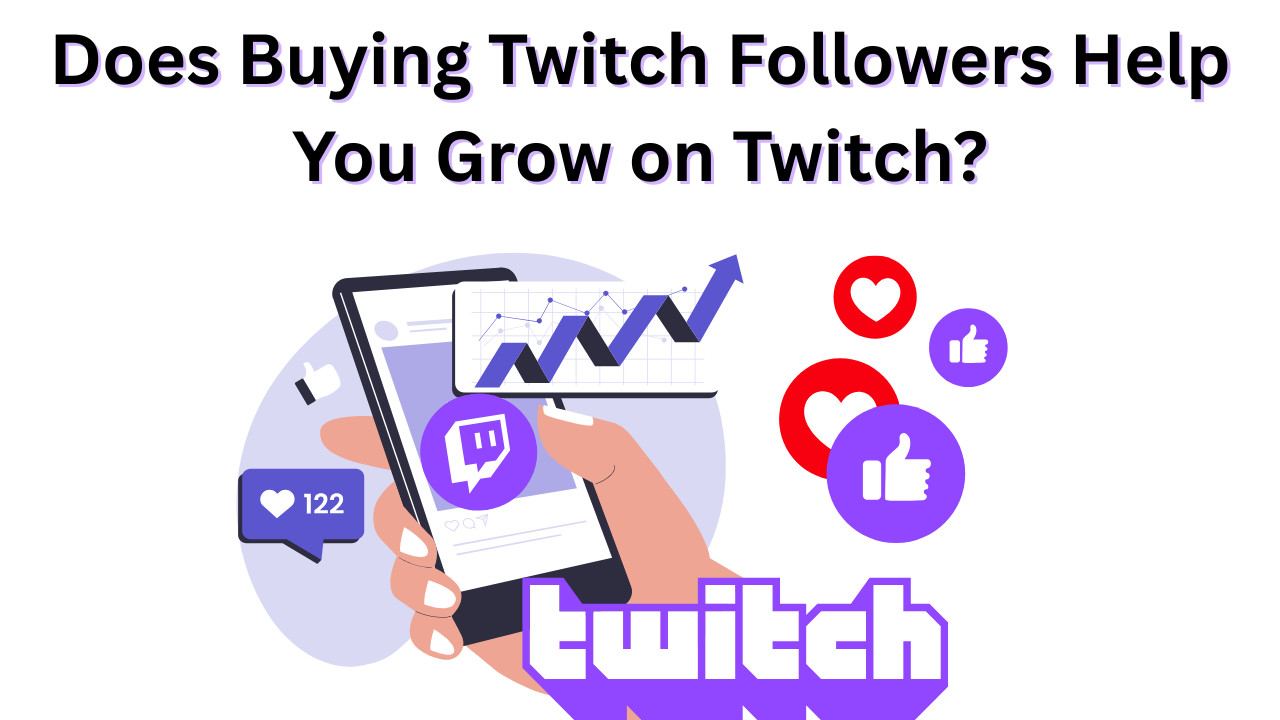How Does The Pinterest Algorithm Work
Published: August 18, 2024
The Pinterest algorithm is at the core of how content is discovered and shared on the platform. Understanding how the Pinterest algorithm works is essential for boosting visibility and engagement on Pinterest.
As a visual discovery engine with millions of active users, Pinterest offers immense potential to reach a vast audience, but only if you can work with its ever-evolving Pinterest algorithm.
This guide will take you through the key factors influencing the Pinterest algorithm and provide actionable tips to improve your content’s performance.
By the end, you’ll be equipped with the knowledge to optimize your Pinterest strategy and start seeing real results.
How Does The Pinterest Algorithm Work

The Pinterest algorithm serves content to users based on their interests, behavior, and interactions with pins on the platform.
It’s designed to deliver a personalized experience by showing pins most likely to resonate with each user.
To ensure your content gets seen, it’s crucial to understand the elements the Pinterest algorithm prioritizes and how to use them to your advantage.
The Key Factors That Influence Pinterest’s Algorithm
User Engagement
One of the most critical signals for the Pinterest algorithm is user engagement. Engagement refers to how users interact with your pins through saving, clicking, commenting, and sharing.
The more engagement your pins receive, the more Pinterest will prioritize showing them to others.
Here are some engagement strategies to consider to find out the Pinterest algorithm works:
- Create Click-Worthy Pins: Focus on crafting engaging pin designs, encouraging users to click through to your content. Use compelling images and titles that spark curiosity.
- Encourage Saves: Pinterest tracks how many users save your pin to their boards. Many saves signal that your content is valuable and worth sharing on your Pinterest page.
- Promote Comments: Encourage conversation by asking questions or sparking discussions in your pin descriptions. This type of interaction can boost your content in the Pinterest algorithm.
Relevance
The Pinterest algorithm aims to deliver content relevant to the individual user. This is achieved by analyzing the keywords used in pin descriptions, titles, and hashtags.
Pinterest wants to show users pins matching their search queries and interests.
Therefore, optimizing your pins for relevance is critical by using appropriate keywords and descriptions.
To ensure your content is relevant:
- Use Strategic Keywords: Identify and use keywords that align with your audience’s search queries. Incorporate these naturally into your pin titles, descriptions, and hashtags.
- Optimize Your Descriptions: Write detailed and precise descriptions that accurately describe the content of your pin. This helps Pinterest categorize your content correctly.
- Align with Niche Interests: Tailor your pins to a specific niche or interest. The more focused your content is, the easier for Pinterest to show it to the right audience.
Freshness and Timeliness
The Pinterest algorithm favors fresh content. New pins are prioritized over older content because they are perceived as more relevant and engaging to users.
To maintain visibility, you need to create and share new pins consistently.
Some ways to stay fresh on Pinterest include:
- Regular Posting Schedule: Develop a consistent posting schedule. Whether you pin daily or weekly, consistency signals to Pinterest that you are an active content creator.
- Create Seasonal Content: Timely content related to holidays, seasons, or current events can perform well as it taps into what users are searching for.
- Repurpose Old Content: Give new life to older content by updating and repinning it with fresh descriptions and images. While Pinterest values fresh content, repinning with a fresh take can help older content regain traction.
Pin Quality
Quality matters on Pinterest. High-quality visuals, engaging designs, and informative text overlays improve the Pinterest algorithm performance.
A well-designed pin captures attention and encourages users to engage with it, boosting its ranking.
Tips for improving pin quality:
- Use Vertical Pins: Vertical pins with a 2:3 aspect ratio perform best on Pinterest because they take up more screen space, making them more likely to be noticed.
- High-Resolution Images: Always use high-quality, clear images. Poor image quality can make your pins less attractive and reduce engagement.
- Text Overlays: Use text overlays sparingly but effectively to convey critical information or a call to action. Make sure the text is readable on mobile devices.
Domain Quality
The domain quality of your website also plays a role in how Pinterest prioritizes your content. Pinterest wants to promote content that links to trustworthy and valuable websites.
The better your website performs regarding user experience and credibility, the more Pinterest will push your pins to users.
Key actions to improve domain quality:
- Optimize Your Website for Pinterest SEO: Ensure your website has fast loading times, is mobile-friendly, and is optimized for a visual search engine. A well-optimized website signals to Pinterest that your domain is credible and trustworthy.
- Use Rich Pins: Rich pins are enhanced with additional information from your website, such as product prices or article titles. This added context makes your pins more engaging and increases click-through rates.
- Brand Consistency: Maintain consistent branding across your website and Pinterest account. This reinforces trust and familiarity with your audience, leading to more engagement.
Pinterest Algorithm Hacks to Boost Your Content

Now that you understand the key factors influencing the Pinterest algorithm, it’s time to apply practical strategies to enhance your content’s performance.
Below are several hacks to help you maximize your reach on Pinterest.
Hack 1: Leverage Rich Pins for More Context
Rich pins automatically sync information from your website to your Pinterest account, making your pins more informative and appealing.
They also provide a richer user experience, which can lead to increased engagement.
Types of rich pins include:
- Product Pins: Show real-time pricing, availability, and where to buy the product directly from your website.
- Article Pins: Display the headline, author, and snippet of the article, making it easier for users to decide if they want to read more.
- Recipe Pins: Include the ingredients, cooking times, and serving sizes, which helps users decide if the recipe suits their needs.
Hack 2: Create Content Based on Trends and Seasonal Interests
Pinterest is a highly seasonal platform, and users often search for specific types of content based on the time of year.
Capitalizing on trends and seasonal interests can increase your chances of reaching a larger audience on your Pinterest account.
- Use Pinterest Trends Tool: Pinterest offers a trends tool that shows what users search for during specific seasons or timeframes. This can help guide your content creation efforts.
- Plan for Seasonal Content: Don’t wait until the last minute to create seasonal content. Plan and create your pins so users are ready to go when searching for those topics.
Hack 3: Optimize for Mobile Users
Most Pinterest users browse the platform on mobile devices, so your pins must be optimized for mobile viewing.
To optimize your pins for mobile:
- Keep Text Legible: Use large fonts and ensure your text is readable on small screens.
- Design for Vertical Viewing: Vertical pins take up more real estate on mobile screens, making them more noticeable.
- Test on Different Devices: Before publishing, test your pins on various devices to ensure they look good across all screen sizes.
Hack 4: Engage with Other Pinners
Pinterest is a social platform, so engaging with other users is essential.
By liking, commenting, and saving pins from others, you can increase your visibility and build a community around your content.
- Join Group Boards: Group Pinterest boards allow you to collaborate with other pinners and share your content with a larger audience. For the best results, make sure the group boards are relevant to your niche.
- Comment on Popular Pins: Commenting on popular pins in your niche can help you gain exposure to a broader audience and potentially attract new Pinterest followers.
Key Pinterest Algorithm Factors
| Factor | Importance Level | Key Actions to Optimize |
| User Engagement | High | Create engaging, clickable content and encourage saves/comments |
| Relevance | High | Use strategic and relevant keywords, accurate descriptions, and consistent niching |
| Freshness | High | Regularly post new pins, repurpose old content with fresh updates |
| Pin Quality | High | Use high-quality vertical images, readable text overlays, and visually appealing designs |
| Domain Quality | Medium | Optimize your website for Pinterest SEO, use rich pins, and maintain consistent branding |
Frequently Asked Questions

How does the algorithm on Pinterest work?
The Pinterest algorithm analyzes a combination of user engagement, pin relevance, freshness, and quality to determine what content to show users when you figure out how the Pinterest algorithm works.
It prioritizes pins that are highly relevant to users’ interests and that have garnered strong engagement.
Regularly updated, high-quality content that resonates with users will be more likely to appear in their feeds.
How do you get high views on Pinterest?
Getting high views on Pinterest requires consistent posting of high-quality, engaging content.
Focus on creating visually compelling pins, using relevant keywords in your descriptions, and leveraging trends and seasonal interests.
Joining group boards and engaging with other users can also help you boost visibility for the Pinterest algorithm.
Has Pinterest’s algorithm changed?
Yes, the Pinterest algorithm is constantly evolving to improve user experience. Recent changes emphasize fresh content and user engagement more than ever before.
This means regularly posting new pins, encouraging interaction, and maintaining a strong, consistent presence on the platform are crucial to success.
What makes a pin go viral on Pinterest?
A pin goes viral when it resonates with many users and encourages high levels of engagement, such as saves, clicks, and comments.
To create viral pins, focus on using eye-catching visuals, strategic keywords, and content around trending or seasonal topics.
Engaging titles and clear calls to action also help your pins stand out.
Conclusion
Understanding and mastering the Pinterest algorithm can be a game-changer for your Pinterest marketing strategy.
The Pinterest algorithm rewards creators who focus on engagement, relevance, fresh content, and high-quality visuals.
To make the most of it, regularly post new, engaging pins, conduct keyword research, optimize your pin designs, and maintain a strong presence on social media platforms.
Following these best practices can increase your reach, boost your engagement, and see real growth on Pinterest.
Now is the time to implement these insights and achieve better results on Pinterest.



